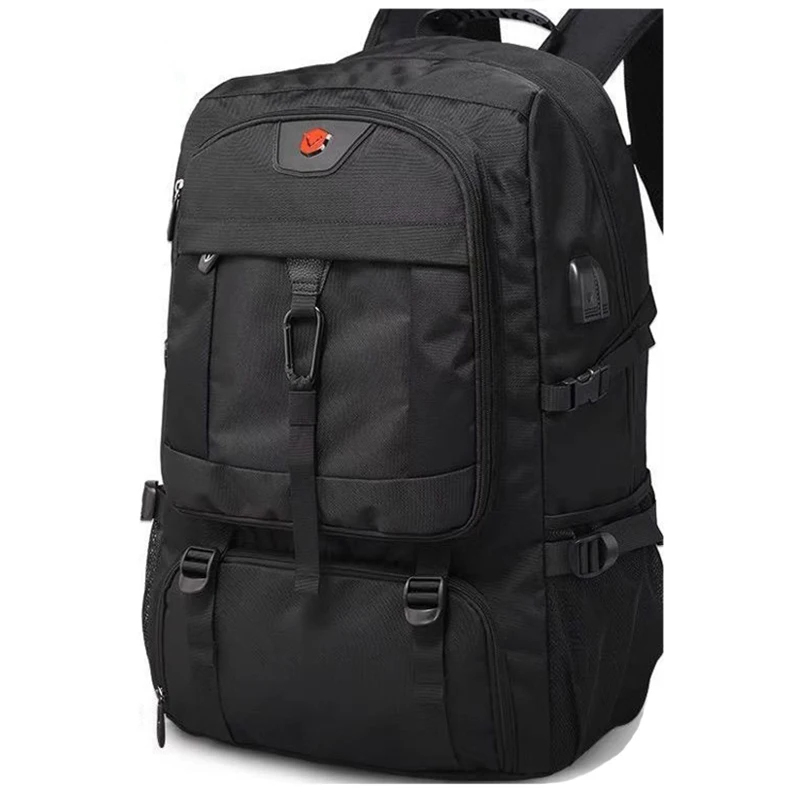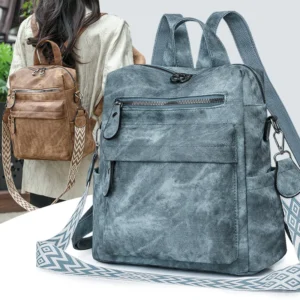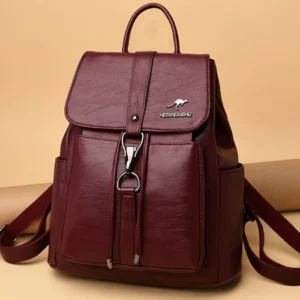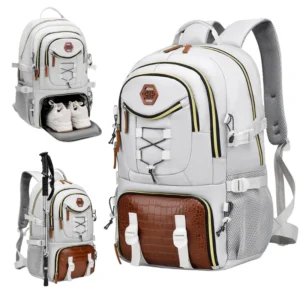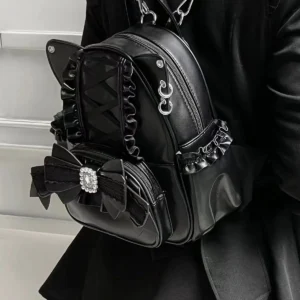Understanding Backpack Capacity: What Does 50 Liters Mean?
When shopping for a backpack, you’ll often see capacity measured in liters. But what exactly does “50 liters” mean in practical terms?
A 50L backpack refers to the total volume the pack can hold—approximately equivalent to 13 gallons of liquid. To visualize this, imagine 50 standard 1-liter water bottles packed into a bag. That’s a considerable amount of space!
In the spectrum of backpack sizes, 50L falls into the medium-large category. Here’s how it compares:
– Small daypacks: 15-30L
– Weekend packs: 30-50L
– Multi-day packs: 50-70L
– Expedition packs: 70L+
A typical 50L backpack measures roughly 24-26 inches tall, 14 inches wide, and 9-12 inches deep. However, these dimensions can vary between manufacturers and designs.
It’s worth noting that backpack capacity measurements aren’t always standardized. Some manufacturers measure only the main compartment, while others include all pockets and external storage. This can create some variance between brands, even when they list the same liter capacity.
Whether a 50L backpack is “too big” depends entirely on your intended use. Understanding what size backpack you need involves considering your activities, trip duration, and personal packing style—all factors we’ll explore throughout this article.
When a 50L Backpack is Just Right
Multi-Day Hiking & Backpacking (2-5 Days)
A 50L backpack truly shines when used for multi-day adventures in the wilderness. This capacity offers the perfect balance between sufficient space and manageable weight for trips lasting between 2-5 days. With this volume, you can comfortably pack:
- Sleeping bag and pad
- Small tent or shelter
- Cooking equipment and food
- Several clothing layers
- Safety and navigation equipment
- Water and filtration system
The 50L capacity hits the sweet spot—large enough to carry essential gear but not so massive that you’re tempted to bring unnecessary items. Most experienced backpackers find this size ideal for weekend to 5-day trips where weight management is crucial.
Extended Travel & Backpacking (1-2 Weeks)
For the minimalist traveler, a 50L backpack can be sufficient for extended trips lasting 1-2 weeks. This approach requires:
- Efficient packing techniques
- Versatile clothing options that can be layered
- Commitment to doing laundry during your journey
- Careful selection of only the most essential items
Many travelers appreciate how leather travel backpacks in this size range force them to be intentional about what they bring, resulting in a more mobile and hassle-free experience.
Winter or Specialized Day Trips
While 50L might be excessive for standard day hikes, this capacity becomes appropriate when:
- Carrying bulky winter gear (extra layers, heavier sleeping bag)
- Bringing specialized equipment (photography gear, climbing hardware)
- Packing for variable weather conditions requiring multiple clothing options
- Carrying gear for multiple people (family hiking with kids)
Youth/First-Time Backpackers
The versatility of a 50L pack makes it an excellent choice for those new to backpacking:
- Provides room to grow as packing skills develop
- Accommodates the extra “just in case” items beginners often bring
- Versatile enough to adapt to different trip lengths as experience grows
- Can handle the less compressed, bulkier gear often used by beginners
If you’re debating between similar sizes, understanding whether you need a 40L or 50L backpack can help clarify which option best suits your specific needs.
When a 50L Backpack is Too Big
Airline Carry-On Travel
One of the most common concerns with 50L backpacks is airline compatibility. Unfortunately, most 50L packs exceed standard carry-on restrictions:
- Typical airline carry-on limits: 40-45L or approximately 22 × 14 × 9 inches
- Standard 50L pack dimensions: 24-26 × 14 × 9-12 inches
While some travelers might occasionally “get away with” bringing a lightly packed 50L bag as carry-on, you’re taking a risk. Gate agents may require you to check the bag, potentially causing delays and additional fees. For reliable carry-on travel, carry-on leather backpacks specifically designed to meet airline requirements offer better peace of mind.
Single Day Hikes or Activities
For day trips and shorter activities, a 50L backpack is simply overkill:
- Excessive weight even when empty compared to proper daypacks
- Reduced mobility when navigating technical terrain
- Poor weight distribution when underpacked
- Unnecessary strain on your back and shoulders
Day hikes typically require only 15-30L of capacity for essentials like water, snacks, first aid supplies, and extra layers. Using an oversized pack creates unnecessary fatigue and reduced stability.
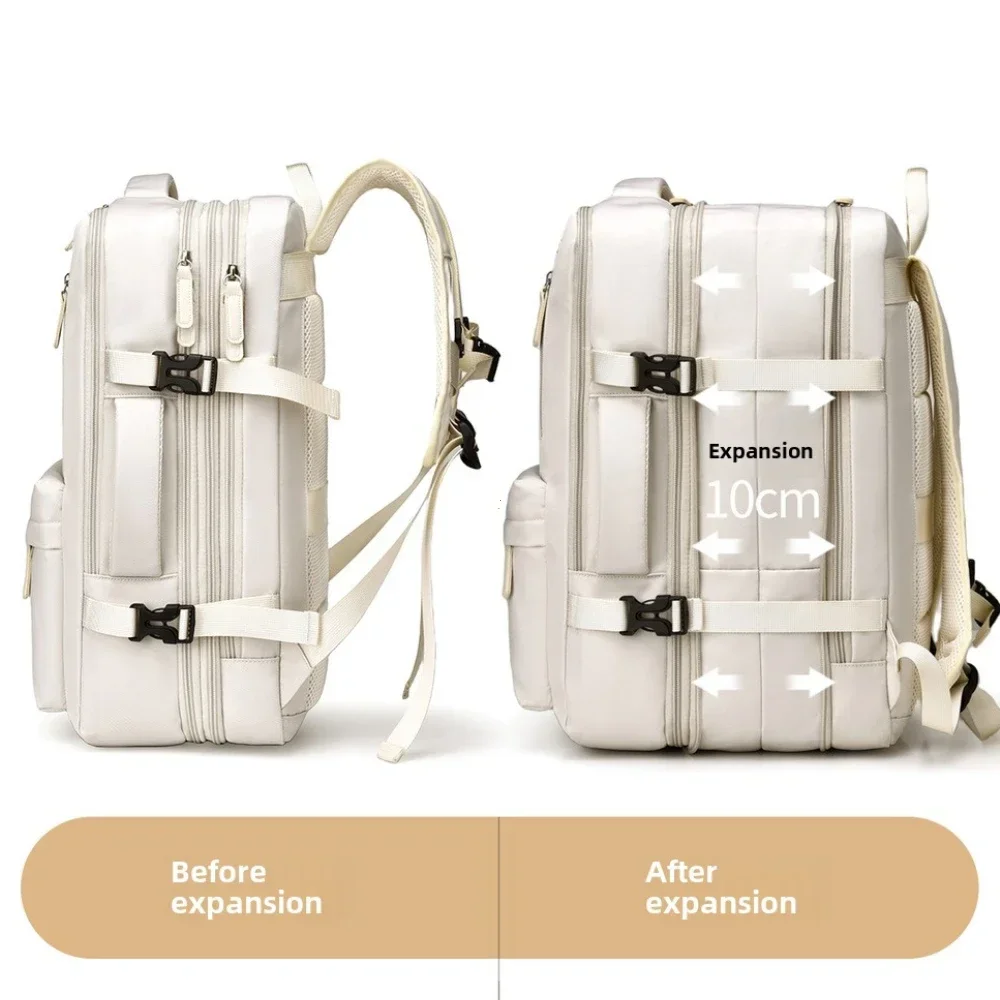
Everyday Use, Commuting, or School
Using a 50L backpack for daily urban activities presents several challenges:
- Excessive bulk in crowded spaces like public transportation
- Difficulty fitting under desks or in lockers
- Increased likelihood of bumping into people or objects
- Overkill for typical daily carry items (laptop, books, lunch)
For everyday use, small leather backpacks provide sufficient space while maintaining a streamlined profile more appropriate for urban environments.
Minimalist Packing for Short Trips
Psychology plays an interesting role in backpack usage—people tend to fill whatever space is available. With a 50L pack for a short trip:
- You’re more likely to pack unnecessary items
- The additional weight affects mobility and energy levels
- Overpacking creates organizational challenges
- You miss the opportunity to refine your essential packing skills
Pros and Cons of a 50L Backpack
Advantages
- Versatility: Appropriate for a wide range of multi-day adventures
- Capacity Sweet Spot: Sufficient space for essential gear without encouraging excessive packing
- Better Support Systems: Often feature more robust suspension systems and load-bearing features than smaller packs
- External Attachments: Typically include lashing points, compression straps, and gear loops for versatile storage
- Organization: Usually offer multiple compartments for better gear organization
- Growth Room: Provides space to accommodate developing skills and gear acquisitions
Disadvantages
- Carry-On Challenges: Exceeds airline restrictions in most cases
- Weight Concerns: Even empty, larger packs weigh more than smaller alternatives
- Overpacking Temptation: Extra space encourages bringing unnecessary items
- Urban Awkwardness: Too bulky for comfortable use in crowded environments
- Underpacking Issues: When not fully loaded, contents can shift and affect balance
- Price Premium: Quality 50L packs often cost more than their smaller counterparts
Understanding how to wear a backpack to prevent back pain becomes even more important with larger capacity packs, as improper fit with heavier loads can lead to discomfort and potential injury.
Factors to Consider When Choosing a Backpack Size
1. Trip Duration and Type
The length and nature of your planned adventures should heavily influence your backpack size choice:
- Weekend trips (1-2 nights): 30-45L typically sufficient
- Multi-day trips (3-5 days): 45-55L ideal for most users
- Extended journeys (5+ days): 55-75L may be necessary, especially without resupply points
- Technical activities: May require additional volume for specialized gear
For activities where more capacity is essential, exploring large leather backpack options might be worthwhile.
2. Gear Volume and Weight
Different activities and seasons demand varying equipment loads:
- Summer backpacking: Requires less volume due to lighter, more compact gear
- Winter adventures: Need additional space for bulkier insulation layers and sleeping gear
- Technical activities: Climbing hardware, camera equipment, or other specialized gear increases required capacity
- Luxury items: Comfort accessories (camp chairs, extra clothing) require additional space
3. Packing Style (Minimalist vs. Standard)
Your personal approach to packing significantly impacts required capacity:
- Minimalist packers: Can often use a smaller pack than recommended
- Comfort-oriented packers: Typically need the upper end of recommended ranges
- Experience level: Seasoned backpackers generally need less volume than beginners
- Compression techniques: Effective use of compression sacks and packing cubes can reduce needed capacity
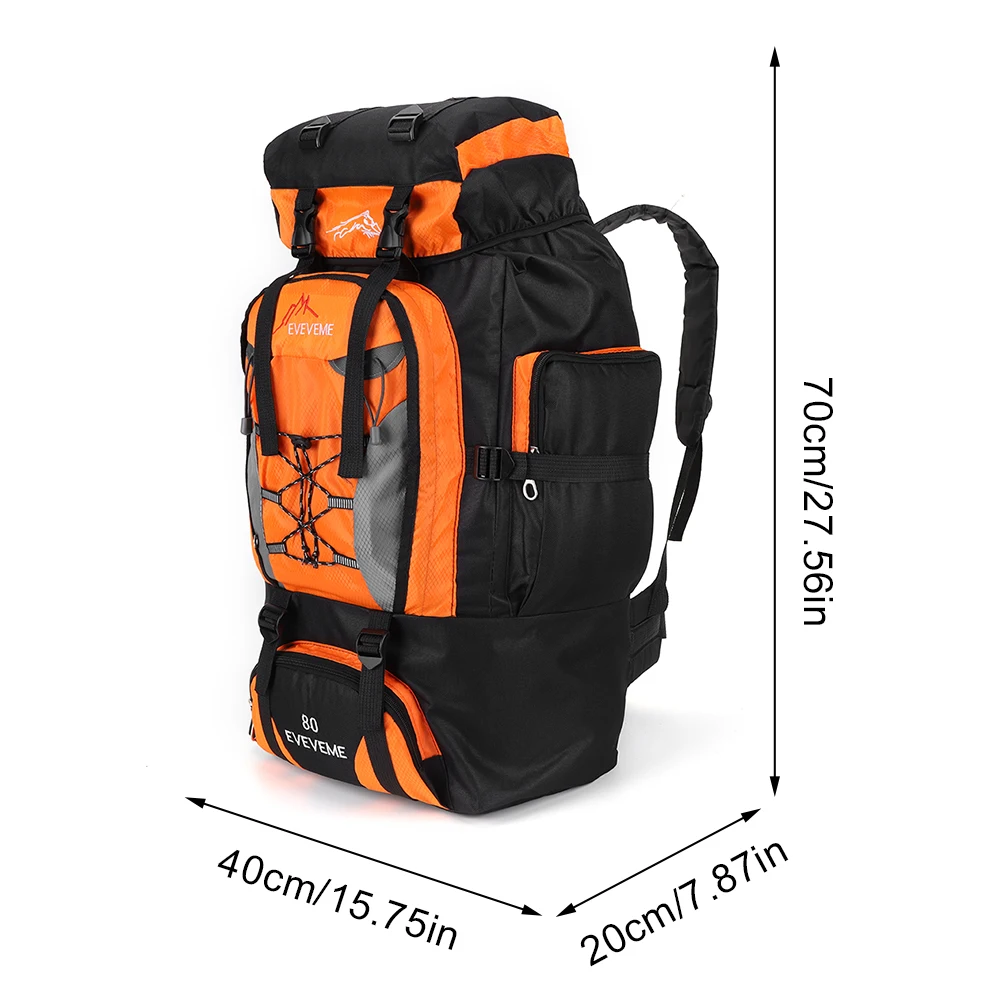
4. Personal Size and Strength
Physical considerations play an important role in backpack selection:
- Torso length: Affects the size of pack that will fit comfortably
- Carrying capacity: Consider your physical comfort with heavier loads
- Body type: Different builds may find certain pack styles more comfortable
- Gender-specific design: Women’s-specific packs often have different harness geometry
Understanding whether your backpack should be tight or loose is essential for comfort, regardless of the capacity you choose.
5. Airline Regulations
For travelers, transportation constraints are crucial:
- Domestic carriers: Typically allow carry-ons up to 40-45L
- International/budget airlines: Often have more restrictive size and weight limits
- Personal item policies: May provide additional carrying capacity alongside main luggage
- Gate-checking options: Some airlines offer free gate-checking for bags slightly over size limits
Maximizing Your 50L Backpack: Efficient Packing Techniques
Smart Packing Methodology
Make the most of your backpack’s capacity with these proven techniques:
- Weight distribution: Place heavy items centered and close to your back
- Zone packing: Organize gear by sleeping zone (bottom), heavy zone (middle), and quick-access zone (top)
- Compression tools: Use compression sacks for clothing and sleeping bags
- External attachments: Utilize straps and loops for bulky items like sleeping pads
Proper leather conditioning and waterproofing can help maintain your backpack’s performance while maximizing its lifespan.
Adjusting for Fit and Comfort
A properly fitted 50L backpack distributes weight effectively:
- Torso measurement: Ensure the pack length matches your torso (not overall height)
- Hip belt positioning: Center on hip bones, not waist, to transfer 70-80% of weight
- Load lifters: Adjust to keep the pack close to your body without pulling backward
- Sternum strap: Position across the middle of your chest to prevent shoulder strap spread
Space-Saving Hacks
Maximize your pack’s effective capacity with these strategies:
- Multi-purpose gear: Choose items that serve multiple functions
- Nested storage: Place smaller items inside larger ones (cooking pot as container)
- Eliminate dead space: Fill empty spaces in boots with socks, stuff small items in gaps
- Essentials only: Question each item—is it necessary or merely convenient?
For maximum performance from your backpack investment, learn about ultimate guide to conditioning leather backpacks to ensure durability.
Alternatives to a 50L Backpack: Finding Your Perfect Size
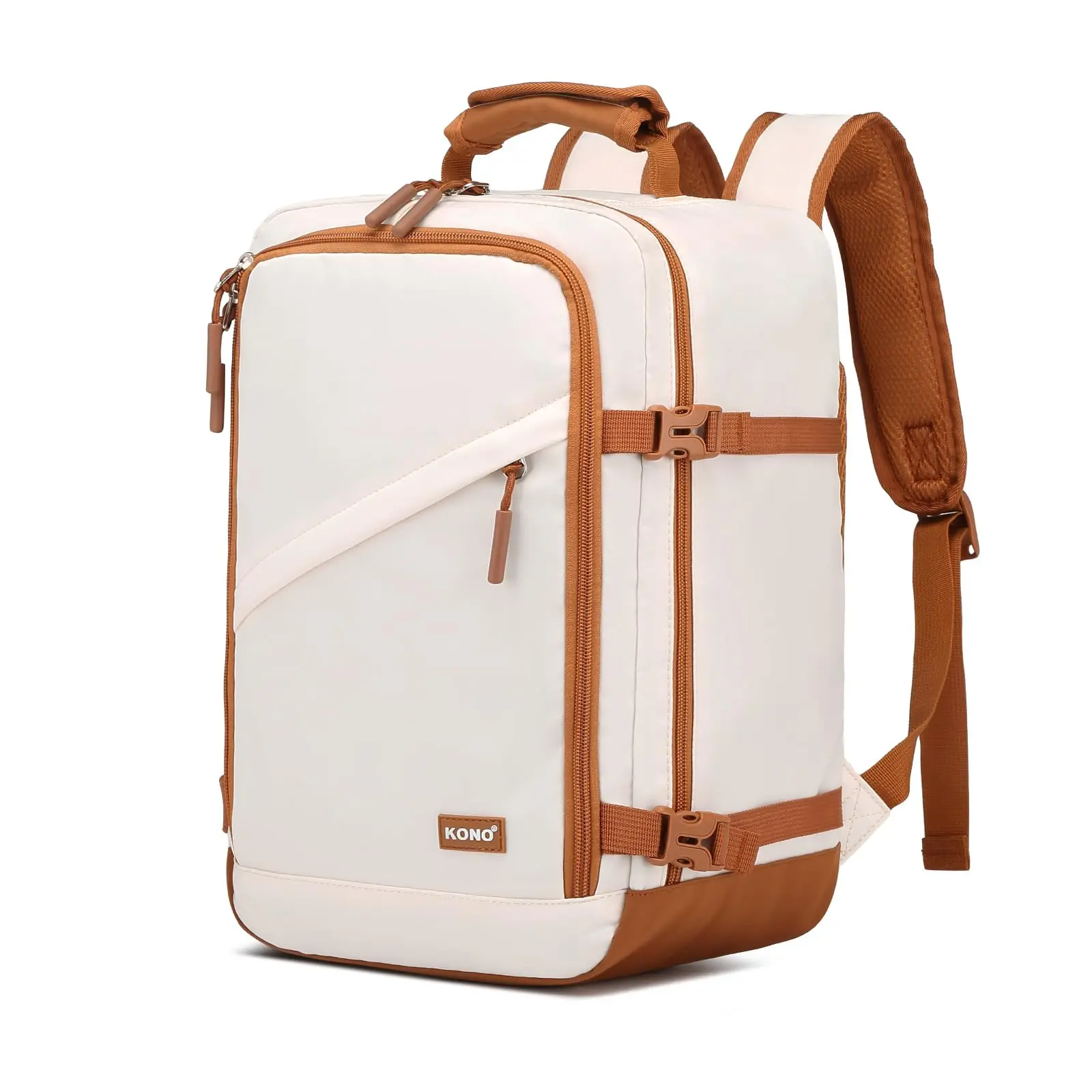
Smaller Backpacks (10-40 Liters)
When a 50L pack seems excessive, consider these more compact options:
- Daypacks (15-30L): Perfect for day hikes, commuting, and everyday use
- Weekend packs (30-40L): Ideal for overnight trips and minimalist weekend adventures
- Travel-specific packs (35-45L): Designed to maximize carry-on compliance while maintaining capacity
- Ultralight specialized packs: Stripped-down designs that prioritize weight savings over features
Larger Backpacks (60+ Liters)
For extensive trips or specialized needs, larger options include:
- Extended trip packs (60-80L): Suitable for wilderness journeys of a week or more
- Expedition packs (80L+): Designed for self-supported adventures requiring extensive gear
- Professional-use packs: Created for guides, rescue personnel, and others needing expanded capacity
Modular Systems and Expandable Options
For versatility across multiple use cases, consider:
- Expandable packs: Feature adjustable volume through compression systems or expandable panels
- Modular designs: Allow attachment of accessory pouches to customize capacity
- Detachable daypacks: Main packs with integrated smaller packs for day excursions
Understanding the essential features of waterproof leather backpacks can help you select a pack that performs well in various conditions, regardless of size.
Is a 50L Backpack Right for You? The Final Assessment
Determining whether a 50L backpack suits your needs comes down to matching the pack to your specific activities and preferences:
A 50L backpack is likely right for you if:
– You regularly take multi-day hiking or backpacking trips (2-5 days)
– You’re a minimalist traveler on journeys of 1-2 weeks
– You need space for winter day trips or specialized gear
– You’re new to backpacking and want versatility while developing skills
Consider alternatives if:
– You primarily take day hikes or urban adventures
– Airline carry-on compliance is a top priority
– You’re looking for an everyday commuter or school bag
– You take extended wilderness journeys without resupply options
Before purchasing, test the backpack with weight if possible. A pack that feels comfortable empty may reveal pressure points once loaded. Adjustability features matter more than minor capacity differences—a well-fitting 50L pack serves you better than an ill-fitting one of the “perfect” size.
Carry On Leather Backpack, Roll Top Leather Backpack
Price range: $77.76 through $96.48 Select options This product has multiple variants. The options may be chosen on the product page17 Inch Leather Laptop Backpack, Men's Leather Travel Backpack, Men's Leather Work Backpack
Price range: $106.28 through $143.88 Select options This product has multiple variants. The options may be chosen on the product pageBlack Leather Backpack, Small Leather Backpack, Women's Leather Backpack
Price range: $112.96 through $116.12 Select options This product has multiple variants. The options may be chosen on the product pageLuxury Leather Backpack, Small Leather Backpack, Women's Leather Backpack
Price range: $137.48 through $138.28 Select options This product has multiple variants. The options may be chosen on the product page15 Inch Leather Laptop Backpack, Carry On Leather Backpack
Price range: $136.84 through $139.88 Select options This product has multiple variants. The options may be chosen on the product pageLarge Leather Backpack, Women's Leather Backpack
Price range: $97.12 through $97.96 Select options This product has multiple variants. The options may be chosen on the product page
Quality construction from brands like Summit Carry ensures your backpack will maintain its performance characteristics over time. Premium materials and thoughtful design result in a pack that distributes weight effectively and resists wear from repeated use.
Common Questions About Backpack Sizing
Is a 50L backpack allowed as airline carry-on?
Generally no. Most 50L backpacks exceed standard carry-on dimensions. Some travelers occasionally succeed with partially-filled, soft-sided 50L packs, but this isn’t reliable.
Can a 50L backpack be compressed to a smaller size?
Many 50L packs include compression straps that can reduce volume when not fully packed. However, frame structure and design limit how much compression is possible.
What’s the difference between internal volume and total volume?
Internal volume refers to the main compartment capacity only, while total volume includes all pockets and external storage areas. This distinction explains why seemingly similar-sized packs might have different stated capacities.
What are the standard backpack size categories?
Standard categories include daypacks (15-30L), weekend packs (30-50L), multi-day packs (50-70L), and expedition packs (70L+), though terminology varies between manufacturers.
How does a unisex 50L compare to women’s-specific models?
Women’s-specific 50L packs typically feature harness systems designed for narrower shoulders, shorter torso lengths, and differently shaped hip belts, though internal capacity remains similar.
Caring for Your Backpack: Maximizing Lifespan and Performance
Proper care extends your backpack’s useful life and maintains its performance:
- Store loosely in a cool, dry place with all compartments open
- Clean according to material specifications (leather requires different care than synthetic fabrics)
- Respect weight limits to prevent stress on seams and suspension systems
- Address minor damage promptly before it worsens
- Regularly inspect high-stress points: shoulder straps, hip belt, bottom panel, and attachment points
Quality backpacks from reputable manufacturers can last 5-10+ years with proper care. Investing in proper maintenance supplies appropriate to your pack’s materials pays dividends in longevity.
How Backpack Designs Have Evolved: From External to Internal Frame
Today’s 50L backpacks benefit from decades of design evolution:
- Early backpacks featured external frames with limited organization and comfort
- Internal frame technology revolutionized weight distribution and stability
- Modern materials reduced overall pack weight while increasing durability
- Contemporary designs focus on body mechanics and ergonomics
- Recent innovations include modular systems and activity-specific customization
These advancements mean today’s 50L packs carry more comfortably than 35L packs from previous generations. The combination of sophisticated suspension systems and lightweight materials has dramatically improved the carrying experience.
Current trends point toward further material innovations, sustainable manufacturing practices, and increasingly specialized designs tailored to specific activities. This continuous evolution ensures that regardless of what size you choose, modern backpacks offer unprecedented comfort and functionality.

